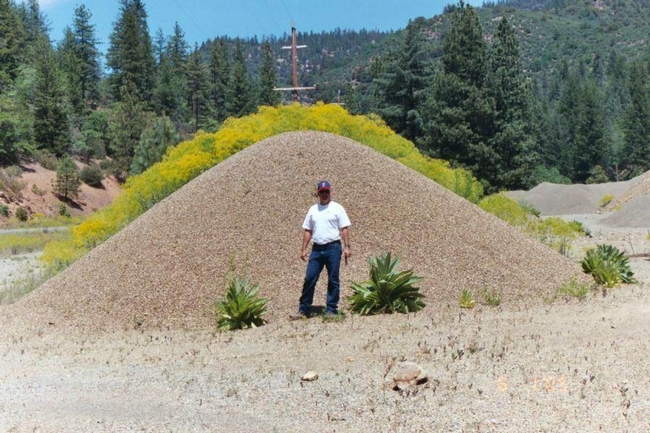As wildland weed management and eradication projects fall to the economic “hatchet”, one vital program continues as a standout---preventing the introduction and spread of invasive weeds can yield a lot of bang for the buck!
Invasive weed seeds and other reproductive parts are often moved to new locations via: imported gravel and fill dirt; vehicles and equipment; or in erosion control materials. Treating weeds over a large area is expensive and often impossible, so land managers can look to weed prevention as a cost-effective alternative. Thousands of dollars on treatment can be saved by preventing the introduction of weeds, especially along roadsides and in construction areas.
Weed prevention educational and outreach work is happening around the state with aggregate producers at gravel pits and quarries. Aggregate production facilities are high quality habitat for weeds due to the constant disturbance. Weed reproductive parts (e.g. seeds, root fragments) are transported from both outside sources and within the quarry and can contaminate recently mined aggregate. Weeds easily transplant with the aggregate from the disturbed habitat of quarries to the disturbed habitats of roadsides and construction sites.
How can we encourage the aggregate industry to improve practices and develop on-site weed management plans? The first step is through education, utilizing several new tools:
Workshops: Preventing the Introduction and Spread of Invasive Weeds
Exeter, Jan. 26, 2012; Los Angeles, Mar. 8; Sonora, April 9; Truckee, May 2
Participants will gain an understanding of how to incorporate prevention best management practices and guidelines into work in the construction, aggregate production and maintenance fields. Valuable information and resource materials will assist participants with environmental stewardship planning and saving money by stopping invasive weeds before they move into a new area.
Who should attend? Transportation managers, quarry managers, engineers, project planners and public/private land managers.
Topics:
Vectors of invasive weed introduction and spread
Aggregate production – weed control and inspection programs for clean gravel
Best management practices for work in utility and transportation corridors
Yellow starthistle biology and control - preventing the spread into the Sierras
Field trip to local gravel pit/quarry
Agenda and registration at: http://ucanr.org/registration2012preventionworkshops
Best Management Practice Manuals for
Land Managers and Transportation and Utility Corridors
Land management activities often involve travel between worksites. Equipment, vehicles, pack animals, clothing, boots, and materials can become vectors for the inadvertent spread of invasive plants. The California Invasive Plant Council (Cal-IPC) has worked with a technical team to publish "Preventing the Spread of Invasive Plants: Best Management Practices for Land Managers". This guide presents an accessible overview of key prevention measures and ready-to-use checklists.
Watch for “Prevention BMPs for Transportation and Utility Corridors” – available this spring on the Cal-IPC Prevention page.
What are the next steps? 1) Assist aggregate producers in designing and implementing invasive weed management plans for their facilities; 2) increase demand for weed-free aggregate products by encouraging land managers, planners, and construction companies to add contract language requiring the use of weed-free materials. New publications and materials are currently being developed to assist with these efforts.
An increase in availability and demand of weed free products could motivate aggregate suppliers to produce additional clean, “value-added” product --- improving their bottom-line and protecting California rangeland and natural areas from the threats of invasive weed spread!
The less we see infested stockpiles, ready to spread weeds up the next road, the happier we will all be!
Dyer's woad infestation in gravel stockpile (photo below) ---Klamath National Forest, photo by Marla Knight
Attached Images:
